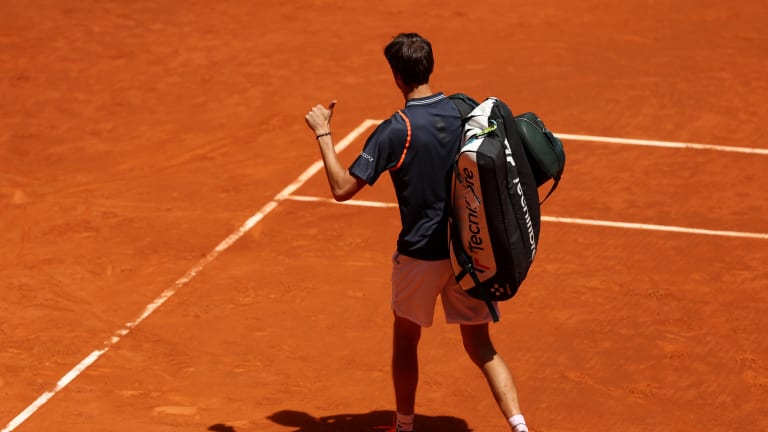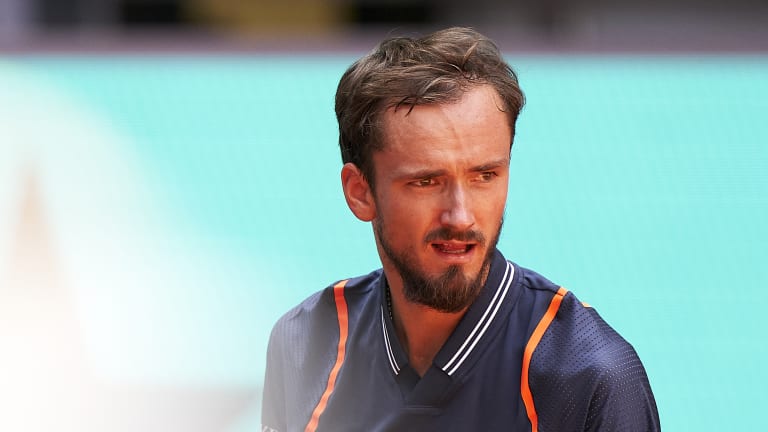Madrid, Spain
Daniil Medvedev's war on clay continues, but it may provide him an advantage down the road
By May 02, 2023Madrid, Spain
After final-round heartbreak, Casper Ruud takes his biggest step forward yet in Madrid
By May 04, 2025Madrid, Spain
Casper Ruud captures first Masters 1000 title of career in Madrid
By May 04, 2025Madrid, Spain
Aryna Sabalenka's Madrid win makes a bigger title in Paris look more possible than ever
By May 03, 2025Madrid, Spain
Aryna Sabalenka claims third Madrid title by leveling head-to-head with Coco Gauff
By May 03, 2025Madrid, Spain
Jack Draper vs. Casper Ruud: Where to Watch, Madrid Preview, Betting Odds
By May 03, 2025Madrid, Spain
Jack Draper closes out Lorenzo Musetti in another dazzling display to reach Madrid final
By May 02, 2025Madrid, Spain
Casper Ruud reaches final in Madrid, now a win away from biggest title of career
By May 02, 2025Madrid, Spain
Aryna Sabalenka vs. Coco Gauff: Where to Watch, Madrid Preview, Betting Odds
By May 02, 2025Madrid, Spain
Jack Draper vs. Lorenzo Musetti: Where to Watch, Madrid Preview, Betting Odds
By May 01, 2025Daniil Medvedev's war on clay continues, but it may provide him an advantage down the road
The Russian was ousted by compatriot Aslan Karatsev in Madrid—the latest chapter in his pseudo-conflict with the slow surface.
Published May 02, 2023
Advertising

Is Medvedev sandbagging on clay? Consider his words about it, and then his results.
© Getty Images
Advertising

“He’s so far down the road, mentally and with movement, that he’s just off the charts when it comes to how he plays,” Rick Macci says of the always-dangerous Medvedev.
© Getty Images